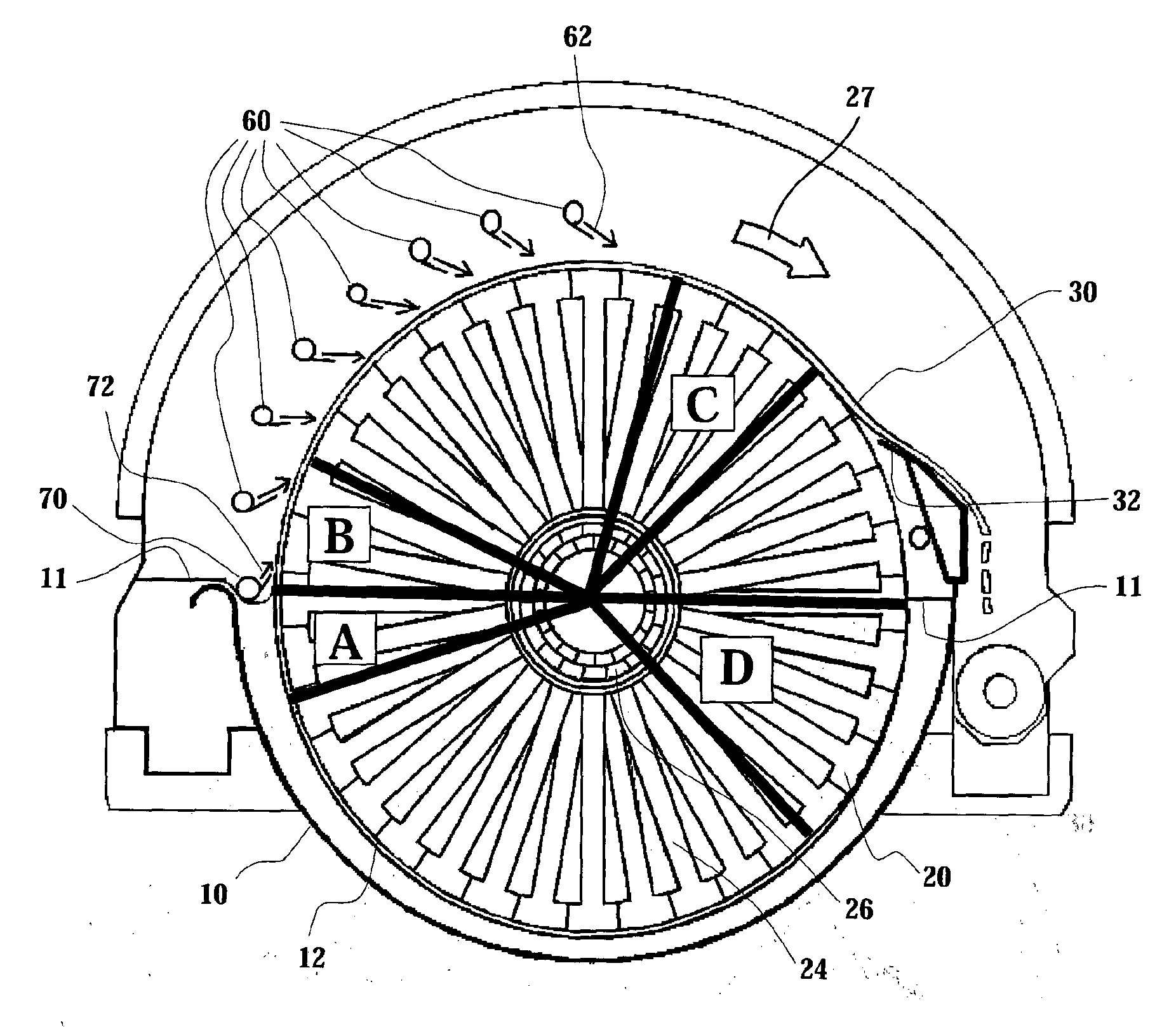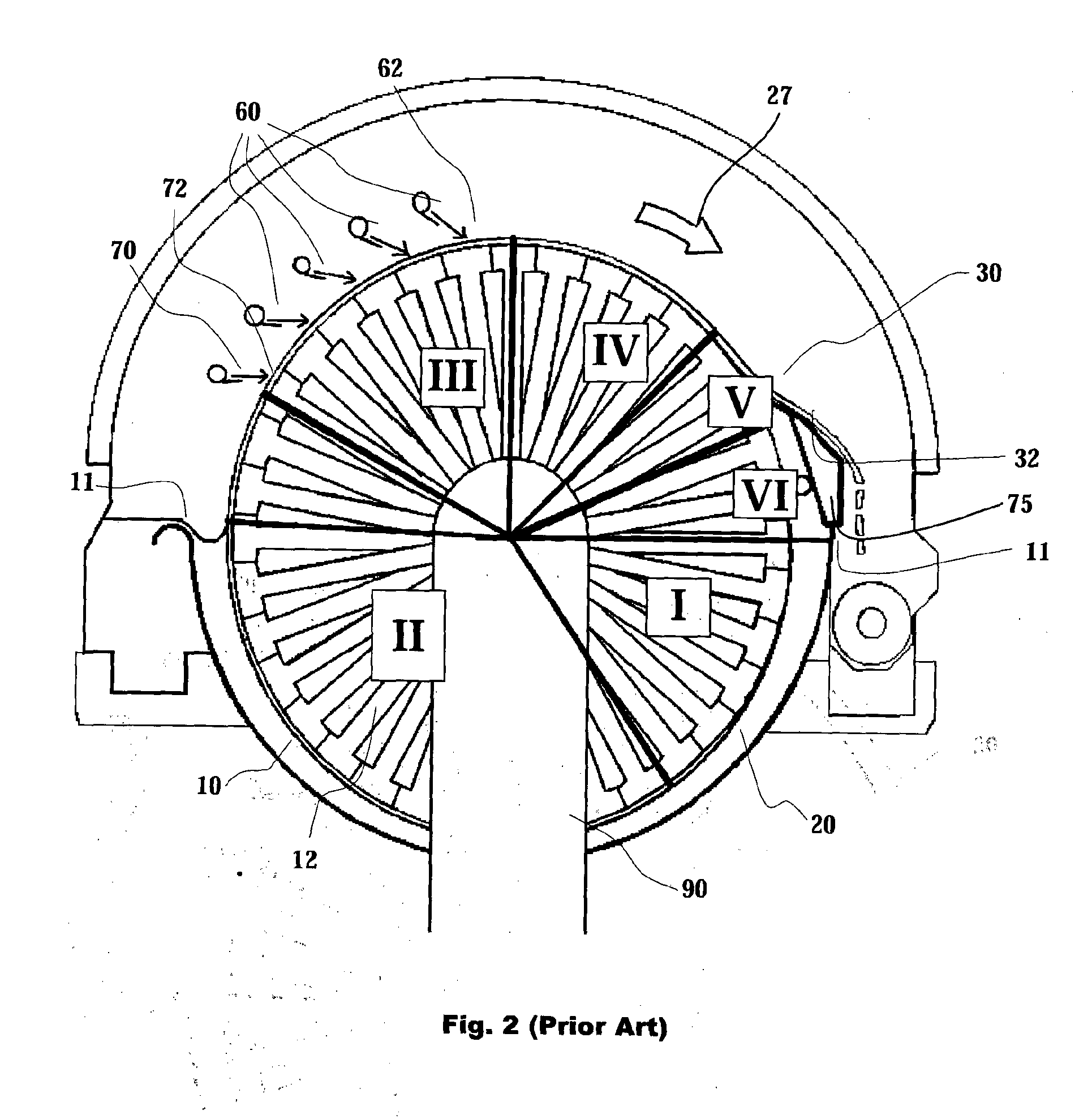Method and apparatus for washing pulp by means of intensified suction
a technology of intensified suction and pulp, which is applied in the direction of moving filter element filters, filtration separation, separation processes, etc., can solve the problems of releasing or otherwise damaging the pulp layer, limiting the vacuum intensity, and reducing so as to reduce the amount of liquid and impurities contained in the pulp layer, the effect of increasing the discharge consistency of the filter
- Summary
- Abstract
- Description
- Claims
- Application Information
AI Technical Summary
Benefits of technology
Problems solved by technology
Method used
Image
Examples
Embodiment Construction
[0053]FIG. 1 illustrates a suction drum washer of prior art in a longitudinal cross section view. A filter solution with a corresponding structure without a washing stage is presented in patent publication FI 86963 (U.S. Pat. No. 5,264,138). The suction drum washer is comprised mainly of a basin 10, either with open or hood-covered upper part, and a cylindrical drum 12 arranged on a shaft 14, which shaft is supported on bearings at its ends and sealed with respect to the basin 10. The body of the drum 12 comprises end plates 18 connected to an extension of the shaft 14, which plates simultaneously prevent the suspension from entering into the interior of the drum, and longitudinal filtrate compartments 20, by means of which the ends of the drum are fixed to each other and which form the load-bearing structure of the drum. The cover of the filtrate compartments 20 may be either a perforated plate, upon which a wire acting as filtering surface is placed, or the wire 21 itself. The per...
PUM
| Property | Measurement | Unit |
|---|---|---|
| length | aaaaa | aaaaa |
| angle | aaaaa | aaaaa |
| suction | aaaaa | aaaaa |
Abstract
Description
Claims
Application Information
 Login to View More
Login to View More - R&D
- Intellectual Property
- Life Sciences
- Materials
- Tech Scout
- Unparalleled Data Quality
- Higher Quality Content
- 60% Fewer Hallucinations
Browse by: Latest US Patents, China's latest patents, Technical Efficacy Thesaurus, Application Domain, Technology Topic, Popular Technical Reports.
© 2025 PatSnap. All rights reserved.Legal|Privacy policy|Modern Slavery Act Transparency Statement|Sitemap|About US| Contact US: help@patsnap.com



